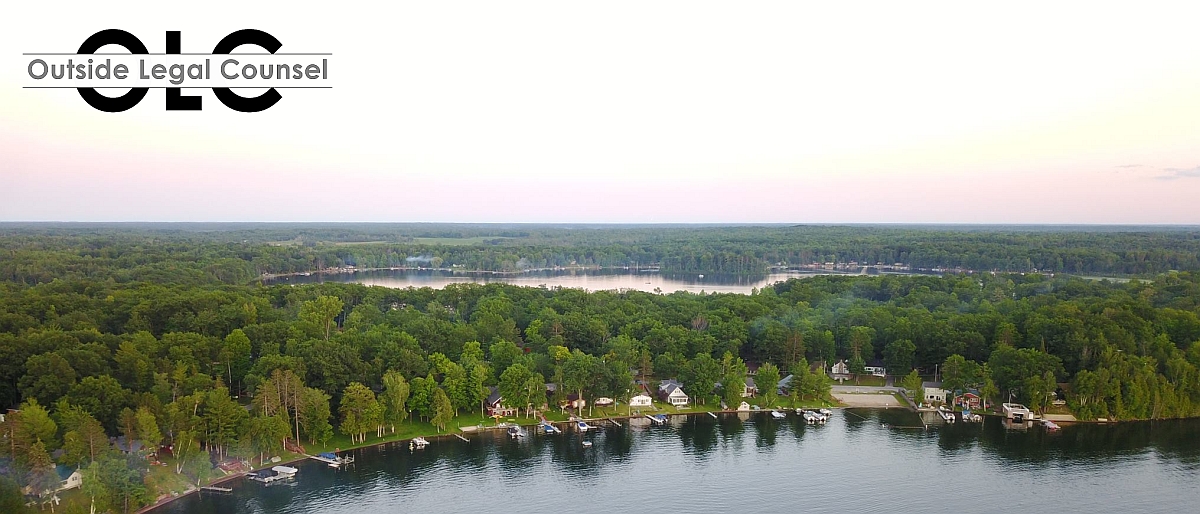When a plat shows a lot is bounded by the meander line of a lake, the grant of land is to the water’s edge.
In Gilroy v. Speidel, the Court of Appeals was called upon to interpret the scope of an easement plaintiff Gilroy had over defendant Speidel’s property on Lake Huron. The easement’s language is unusual in that it granted defendant an easement on the east 24 feet of Lot 20 except the North 340 feet thereof… to restrict construction or improvements on this property to maintain the view from the Gilroy property.” The easement also granted Gilroy the right to have a walkway to the shore of Lake Huron.
In 2010, the defendant owner then constructed a dock within the easement, removed the fence, and attempted to block Gilroy’s access. While the case is very fact specific to this easement, the case affirms several important principles.
First, when drafting a legal easement, consult a property attorney to avoid costly mistakes resulting in litigation.
Second, the Court of Appeals affirmed many long-time principles of property and riparian rights. When a plat shows a lot is bounded by the meander line of a lake, the grant of land is to the water’s edge and “defines the sinuosities of the banks.”
Third, the Court also affirmed that easement holder may only complain or challenge that which is within the easement.
Lastly, plaintiff made a claim for adverse possession—a type of equitable claim where an invader is granted full title after fifteen years of unlawful, but consistent use. When plaintiff here filed the lawsuit, it only had 14 years of use—the claim was denied.
